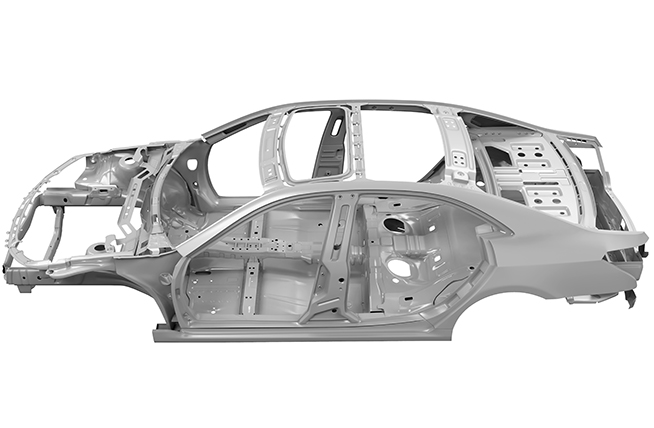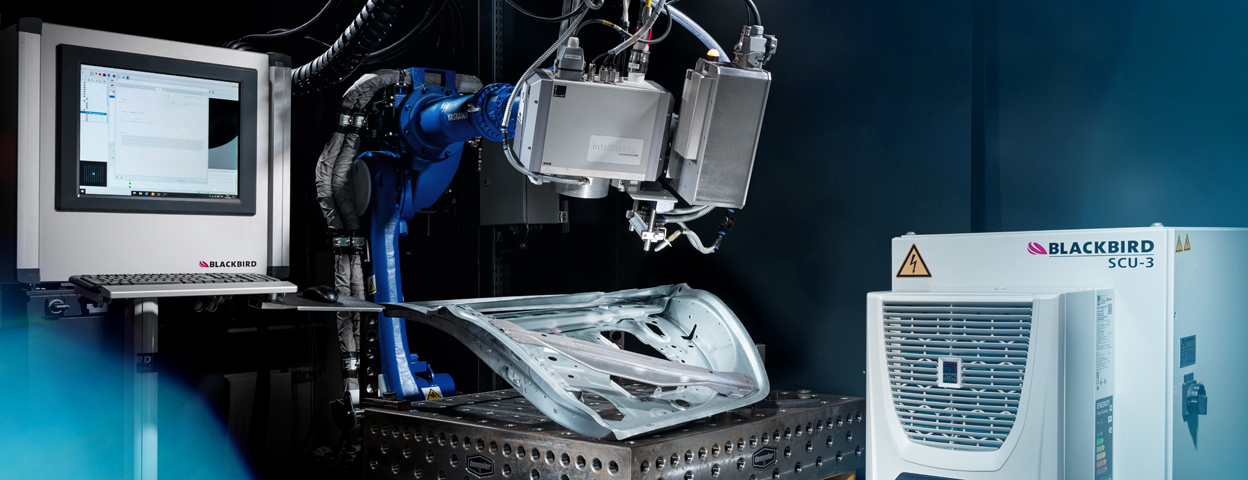Body-in-white Welding
The body-in-white (BIW) of each vehicle is the structure that holds the power train technology, hang on parts and the passenger compartment together. The associated functions, especially the passenger safety, represent high demands for the individual components and their joints.
Different joint geometries, different materials and significant requirements for the welding seam require a flexible tool for the joining of the elements of a body-in-white: for example longitudinal and cross girders, side parts and floor structures. The scanner-based remote laser welding shows its strengths under these conditions.
Advantages of Remote Laser Welding
The different joining tasks for a body-in-white can be implemented fast and efficiently based on the simple programming of the welding tasks by using the Blackbird RSU User Software. Complex welding geometries can be addressed easily by the scan system in connection with the on-the-fly welding.
In a combined use with the OCT technology, the laser beam is directed perfectly to the joining position and geometric seam characteristics can be recorded afterwards.
Based on the large working distance between the components and the scanner, a performant air management can be used to optimally remove smoke residue and weld spatter. This guarantees a constant seam quality.
Typical Welding Configuration
- intelliWELD II PR or intelliWELD II FT scan system
- SCU-3 controller
- On-the-fly machining
- Optional: OCT for seam tracking

